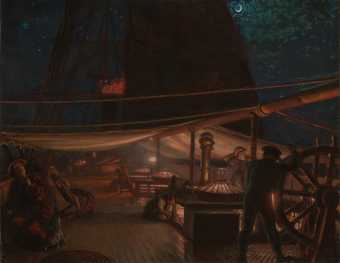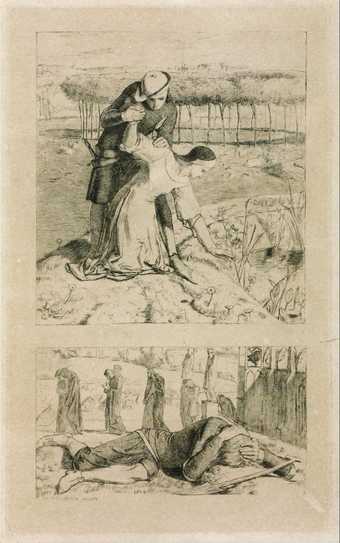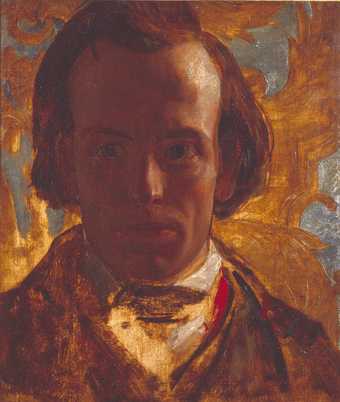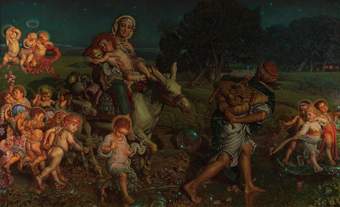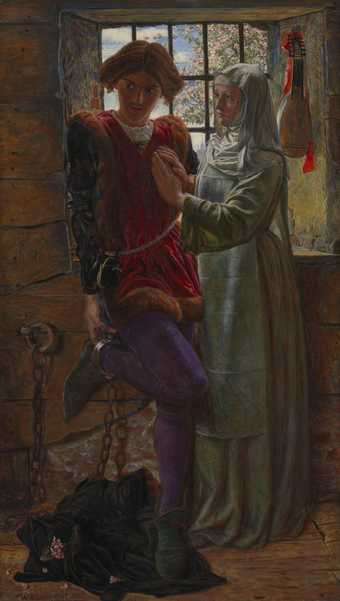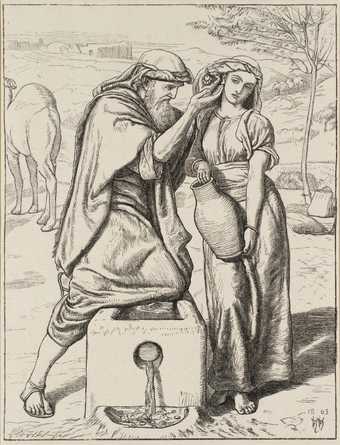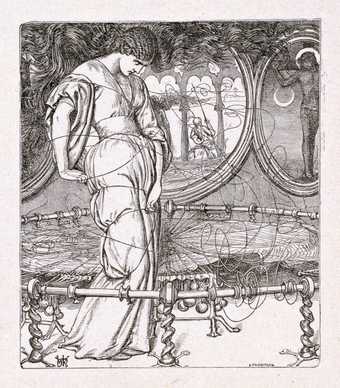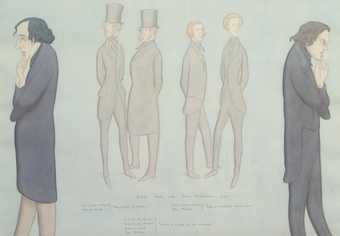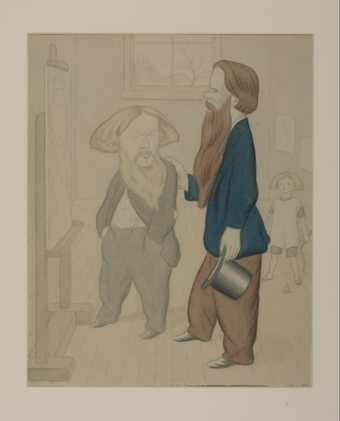Artist biography
Hunt was born in London, the son of a warehouse manager. He worked as an office clerk before being accepted at the Royal Academy Schools in 1844. He met J.E. Millais around this time. He exhibited at the Royal Manchester Institution from 1845, and at the Royal Academy and the British Institution from 1846. In September 1848, with D.G. Rossetti and Millais, he formed the Pre-Raphaelite Brotherhood. The group's stated aims were:
1, To have genuine ideas to express; 2, to study Nature attentively, so as to know how to express them; 3, to sympathise with what is direct and serious and heartfelt in previous art, to the exclusion of what is conventional and self-parading and learned by rote; and 4, and most indispensable of all, to produce thoroughly good pictures and statues.In 1850 Hunt exhibited A Converted British Family Sheltering a Christian Missionary from the Persecution of the Druids (Ashmolean Museum, Oxford) at the Royal Academy; it was sold to Thomas Combe, who become his major patron, friend and business adviser. In 1852 he sold The Hireling Shepherd (City of Manchester Art Galleries), his first work to display his new style of symbolic realism which was intended to expressed Christian ideals. His 1853 Royal Academy exhibits attracted the attention of Thomas Fairbairn, who commissioned him to complete The Awakening Conscience (1853, Tate Gallery T02075).
(William Michael Rossetti, ed., Dante Gabriel Rossetti: His Family-Letters, with a Memoir, London 1895, I, p.135)
Hunt left England for Egypt in January 1854, spending two years in the Holy Land. The major painting to result from this stay was The Scapegoat (1854-5, Lady Lever Art Gallery, Port Sunlight). He contributed to Moxon's edition of Tennyson's Poems in 1857. In 1865 he married Fanny Waugh. They left England for the East in August 1866; however while in quarantine detention in Florence Fanny gave birth to a son, contracted miliary fever and died. Hunt returned to England in September 1867. The following year he travelled back to Florence to work on a memorial to Fanny.
Hunt was elected a member of the Old Water-Colour Society in 1869. He visited Jerusalem in August of that year. In 1875 he married Fanny's sister Edith, and returned to Jerusalem, where he began The Triumph of the Innocents (see Tate Gallery T03321, N03334). He returned to London in 1878, preferring to exhibit at the Grosvenor and New Galleries (1877-99) or in one-picture exhibitions, rather than with the Royal Academy. His first retrospective was held in London in 1886, and was accompanied by the publication of his series of articles on the Pre-Raphaelite Brotherhood in the Contemporary Review. He visited the Middle East for the last time in 1892. By the end of the century his eyesight had deteriorated. In 1905 he was awarded the Order of Merit and an honorary Doctor of Civil Law by Oxford University. His memoirs were published that year. A series of one-man shows was held in 1906-7, in London, Manchester, Liverpool and Glasgow. In 1907 his painting The Ship (1875, Tate Gallery N02120) was bought by a group of his friends and presented to the Tate Gallery to commemorate the artist's eightieth birthday. He died in London.
Further reading:
William Holman Hunt, Pre-Raphaelitism and the Pre-Raphaelite
Brotherhood, 2 volumes, London 1905
Leslie Parris (ed.), The Pre-Raphaelites, exhibition catalogue, Tate Gallery, London 1984, reprinted 1994
Terry Riggs
March 1998
Wikipedia entry
William Holman Hunt (2 April 1827 – 7 September 1910) was an English painter and one of the founders of the Pre-Raphaelite Brotherhood. His paintings were notable for their great attention to detail, vivid colour, and elaborate symbolism. These features were influenced by the writings of John Ruskin and Thomas Carlyle, according to whom the world itself should be read as a system of visual signs. For Hunt it was the duty of the artist to reveal the correspondence between sign and fact. Of all the members of the Pre-Raphaelite Brotherhood, Hunt remained most true to their ideals throughout his career. He was always keen to maximise the popular appeal and public visibility of his works.
This biography is from Wikipedia under an Attribution-ShareAlike Creative Commons License. Spotted a problem? Let us know.
Read full Wikipedia entry

